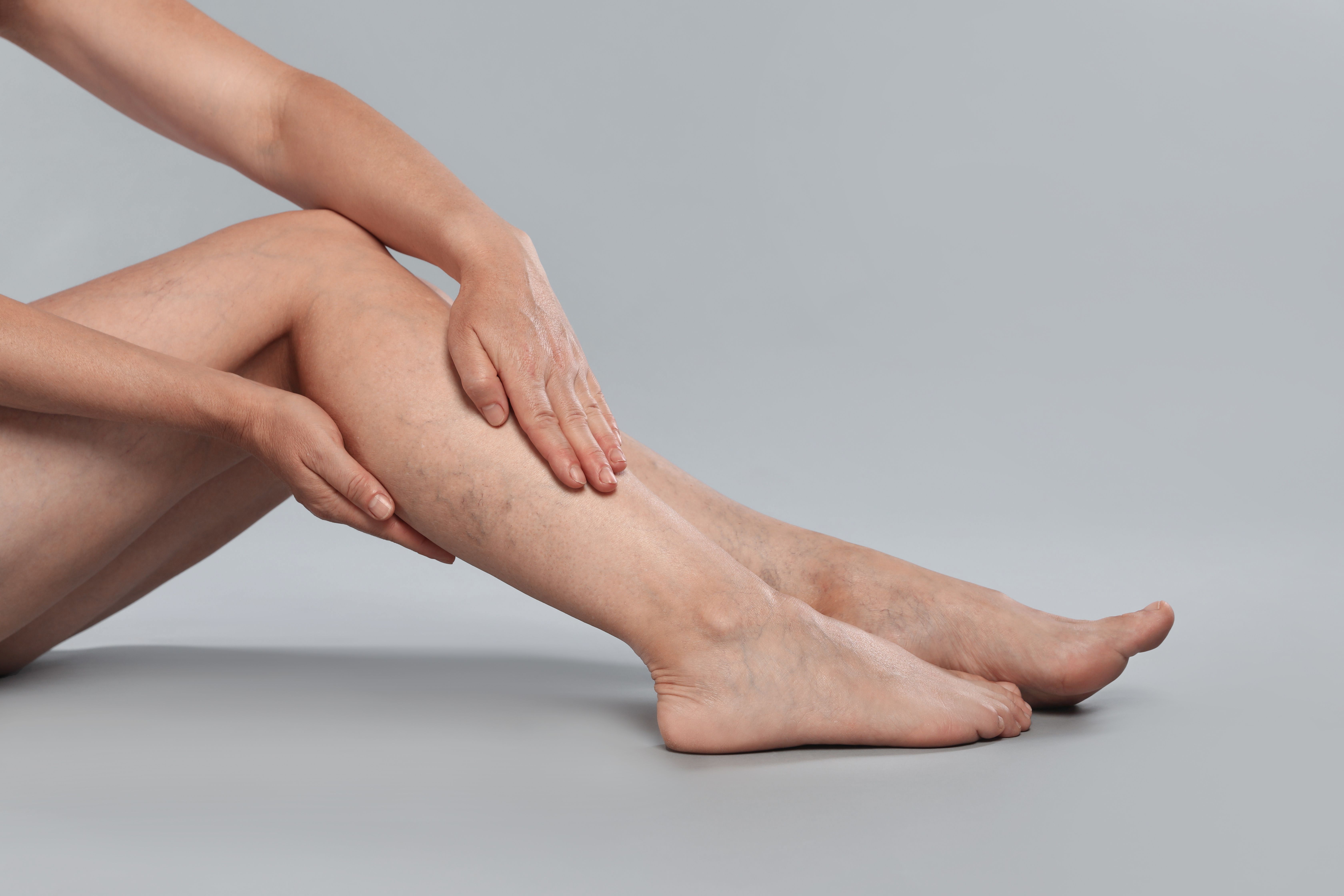Chronic Venous Disease
Varicose Veins
Signs & Symptoms of Chronic Venous Disease
3/27/2025
Understanding the Stages of Vein Disease: A Complete Guide
Overview
- Vein disease is a condition that affects many Filipinos, often causing discomfort and affecting daily activities.
- Vein disease progresses through several stages, starting with cosmetic issues like spider veins and advancing to more severe conditions such as varicose veins, swelling, skin changes, and venous ulcers.
- Early intervention and management, including the use of treatments like Diosmin + Hesperidin (Daflon® 1000), can help prevent further complications and improve circulation.
Introduction
Vein disease, also known as venous insufficiency, is a condition where the veins in the legs fail to function properly, leading to blood pooling in the veins1. This can cause various symptoms, such as pain, swelling, and varicose veins. Understanding the stages of this disease is essential in identifying the severity of your condition and seeking appropriate treatment.
In this article, we will walk you through the different stages of vein disease, from the early signs to more advanced symptoms, and explain how you can manage it effectively with proper care and treatments.
What are the Stages of Vein Disease?
Vein disease progresses in stages, with each presenting different symptoms and severity1. This can range from minor cosmetic concerns like spider veins to more serious conditions that require medical attention.

Stage 1: Spider Veins
In the first stage, small, thread-like veins known as spider veins appear on the surface of the skin. These veins are red, blue, or purple and can be seen on the legs, especially around the thighs and calves2.
Spider veins are often harmless but can be a sign of an underlying venous problem. While they are mainly a cosmetic concern, they may cause mild itching or burning sensations.
Stage 2: Varicose Veins
The veins become larger and more twisted. They are visible beneath the skin and may appear bulging or swollen. This is often accompanied by discomfort, including aching or heaviness in the legs, especially after prolonged standing or sitting3.
While varicose veins can be unsightly, they can also cause symptoms like itching, swelling, and pain. Treatment options, such as compression therapy or medical procedures, can help manage these symptoms and prevent further damage4.
Stage 3: Edema (Swelling)
This stage is marked by noticeable swelling, or edema, in the legs and ankles. This swelling is often worse at the end of the day and can be a result of poor circulation5.
This occurs due to the veins being unable to efficiently return blood to the heart, causing fluid to build up in the tissues6. Managing swelling early is important to prevent the development of more severe complications. Compression stockings, elevation, and exercises like walking can help reduce swelling and improve your blood flow.
Stage 4: Skin Changes
The skin around the ankles and lower legs starts to change in this stage. You may notice discoloration (hyperpigmentation), a darkening of the skin, and a feeling of tightness or irritation.
The skin may become brittle, and ulcers may form in severe cases7. These skin changes happen due to poor blood circulation and a lack of oxygen to the tissues. It's crucial to seek medical attention at this stage to prevent the condition from worsening and to avoid complications like open sores or infections8.
Stage 5: Healed Venous Ulcers
Any open sores or ulcers caused by venous insufficiency may begin to heal in stage 5, but the area remains sensitive. Healed venous ulcers may still cause discomfort and may be at risk of reopening if proper care isn’t taken.
To prevent ulcers from going back, it's essential to continue with your treatment and monitor the area for any signs of infection or relapse. Compression therapy and lifestyle changes can also aid in preventing future ulcers9.
Stage 6: Active Venous Ulcers
This is the most severe stage of vein disease. Active venous ulcers are open sores that form on the skin, usually around the ankles10. These can be painful and may take a long time to heal, putting the affected individual at risk for infection.
If left untreated, it can cause further complications and severely impact the quality of life. Immediate treatment is necessary at this stage, which may include advanced wound care, vein surgery, or other medical interventions10.

Prevention and Management
There are several measures you can take to manage the progression of your vein disease. Regular physical activity, elevating your legs, maintaining a healthy weight, and avoiding long periods of standing or sitting can help keep your veins healthy. In addition, wearing compression stockings can support circulation and reduce swelling.
One effective way also to support vein health is by using Diosmin + Hesperidin (Daflon® 1000), which can help reduce inflammation, improve vein strength, and enhance blood circulation. This oral medicine is often recommended to manage symptoms of vein disease, especially in the earlier stages, and can be a valuable addition to your treatment plan.
Key Takeaway
Understanding the stages of vein disease is vital in addressing the condition early and preventing complications. If you experience symptoms like spider veins, swelling, or discomfort, take action and consult a healthcare provider.
Along with medical treatments like compression therapy and surgical options, Diosmin + Hesperidin (Daflon® 1000) can be a helpful ally in managing vein disease and improving circulation. Early intervention can make a significant difference in your overall well-being, allowing you to lead a more active, comfortable life. Don't wait for the condition to worsen, take charge of your vein health today.
REFERENCES
- https://my.clevelandclinic.org/health/diseases/16754-venous-disease
- https://www.medicalnewstoday.com/articles/324276
- https://www.hopkinsmedicine.org/health/conditions-and-diseases/varicose-veins
- https://www.medicalnewstoday.com/articles/240129
- https://www.stridecare.com/blog/vein-disease-stages-when-to-act/
- https://www.webmd.com/dvt/dvt-venous-insufficiency
- https://texaseva.com/vein-disease/leg-ulcers/
- https://texaseva.com/posts/treatment/chronic-venous-insufficiency-stages/
- https://www.hopkinsmedicine.org/health/conditions-and-diseases/chronic-venous-insufficiency
- https://pmc.ncbi.nlm.nih.gov/articles/PMC3478919/
2025